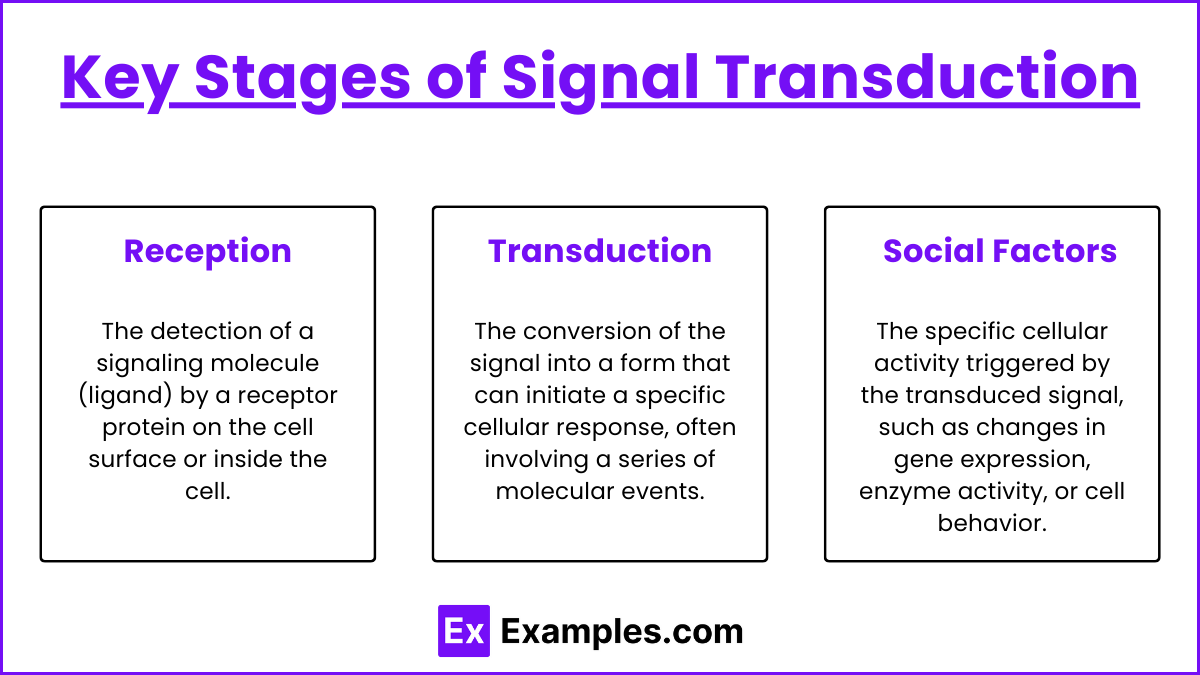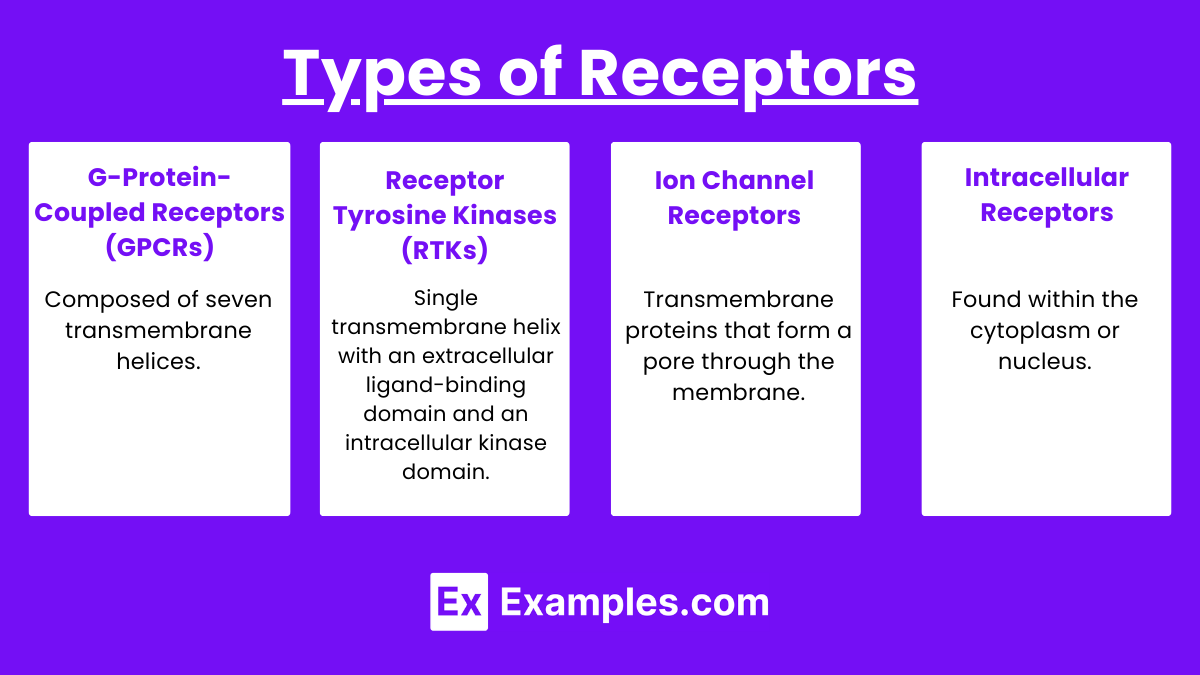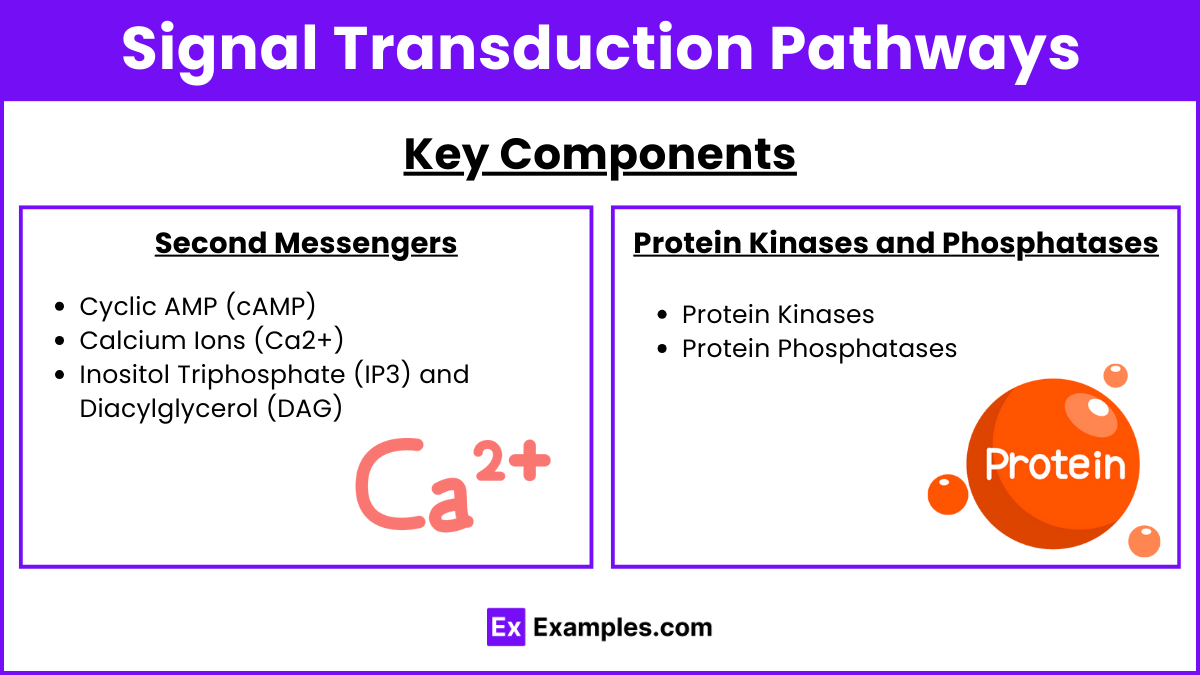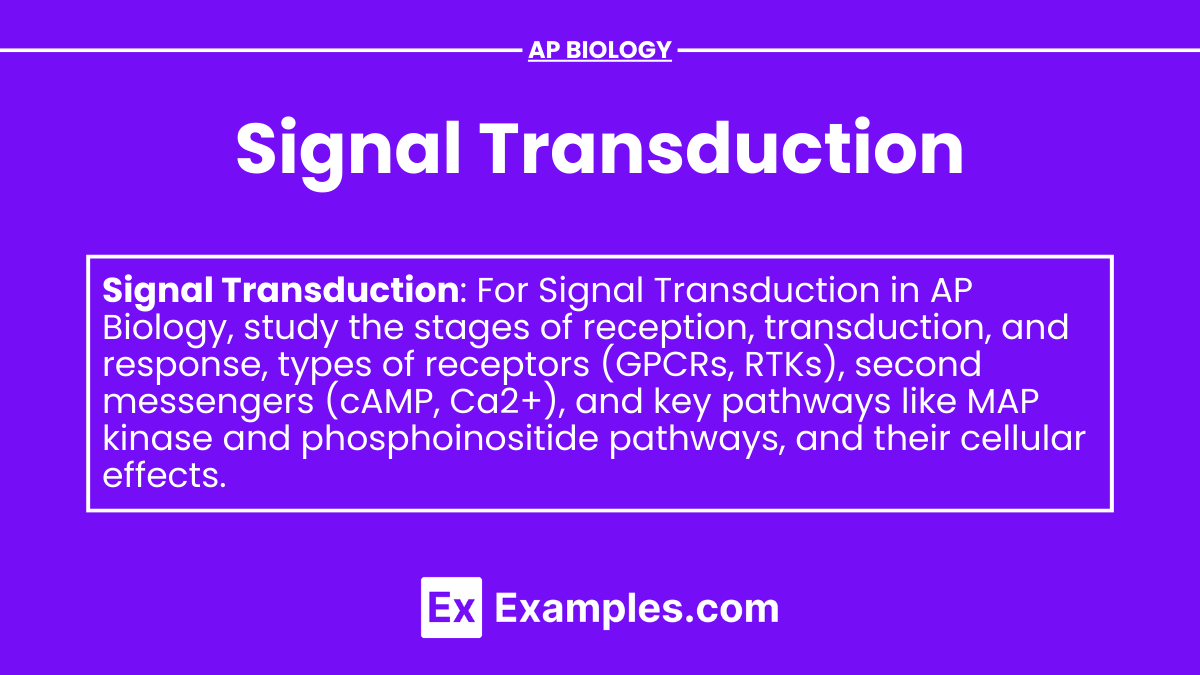In AP Biology, signal transduction is essential for understanding how cells communicate and respond to their environment. This process involves the cell membrane receiving external signals and converting them into specific cellular responses. According to cell theory, all living organisms are composed of cells, each with a cell wall (in plants) or membrane. Signal transduction mechanisms allow these cells to maintain homeostasis and coordinate functions, demonstrating the intricate communication networks within and between cells.
Learning Objectives
In studying Signal Transduction for AP Biology, students should achieve the following learning objectives: Understand how cell theory relates to signal transduction, explore how signals regulate the cell cycle, and recognize the roles of the cell wall and cell membrane in plants and animals. Additionally, students should learn how signals are transmitted through the plasma membrane and processed within the cytosol and cytoplasm, ensuring proper cellular function and interaction.
Overview of Signal Transduction
Signal transduction involves three main stages: reception, transduction, and response. Each stage includes multiple steps and components that work together to ensure accurate signal transmission and appropriate cellular reactions.
Key Stages

- Reception: The detection of a signaling molecule (ligand) by a receptor protein on the cell surface or inside the cell.
- Transduction: The conversion of the signal into a form that can initiate a specific cellular response, often involving a series of molecular events.
- Response: The specific cellular activity triggered by the transduced signal, such as changes in gene expression, enzyme activity, or cell behavior.
Types of Receptors

- G-Protein-Coupled Receptors (GPCRs):
- Structure: Composed of seven transmembrane helices.
- Mechanism: Ligand binding activates the receptor, which in turn activates a G-protein by exchanging GDP for GTP. The activated G-protein then triggers downstream signaling pathways.
- Receptor Tyrosine Kinases (RTKs):
- Structure: Single transmembrane helix with an extracellular ligand-binding domain and an intracellular kinase domain.
- Mechanism: Ligand binding induces dimerization and autophosphorylation of the receptor, activating downstream signaling proteins.
- Ion Channel Receptors:
- Structure: Transmembrane proteins that form a pore through the membrane.
- Mechanism: Ligand binding opens or closes the ion channel, altering the flow of ions across the membrane and generating a cellular response.
- Intracellular Receptors:
- Location: Found within the cytoplasm or nucleus.
- Mechanism: Ligands (often small, hydrophobic molecules) diffuse across the cell membrane and bind to the receptor, influencing gene expression directly.
Signal Transduction Pathways

Key Components
- Second Messengers:
- Cyclic AMP (cAMP): Generated from ATP by adenylyl cyclase, cAMP activates protein kinase A (PKA) and regulates various cellular processes.
- Calcium Ions (Ca²⁺): Released from intracellular stores or entering through membrane channels, Ca²⁺ acts as a second messenger in various signaling pathways.
- Inositol Triphosphate (IP3) and Diacylglycerol (DAG): Produced by the cleavage of phospholipids, IP3 releases Ca²⁺ from the endoplasmic reticulum, while DAG activates protein kinase C (PKC).
- Protein Kinases and Phosphatases:
- Protein Kinases: Enzymes that phosphorylate target proteins, altering their activity and function. Examples include MAP kinases and PKA.
- Protein Phosphatases: Enzymes that remove phosphate groups from proteins, reversing the effects of phosphorylation.
Examples of Signal Transduction Pathways
- GPCR Pathway:
- Ligand binding activates GPCR.
- GPCR activates G-protein by exchanging GDP for GTP.
- Activated G-protein activates adenylyl cyclase, producing cAMP.
- cAMP activates PKA, leading to phosphorylation of target proteins and cellular responses.
- RTK Pathway:
- Ligand binding induces RTK dimerization and autophosphorylation.
- Phosphorylated RTK recruits and activates signaling proteins like Ras.
- Ras activates a kinase cascade (MAP kinase pathway), leading to changes in gene expression and cell behavior.
- Calcium Signaling Pathway:
- Ligand binding to a receptor activates phospholipase C (PLC).
- PLC cleaves PIP2 into IP3 and DAG.
- IP3 releases Ca²⁺ from the endoplasmic reticulum.
- Elevated Ca²⁺ levels activate various Ca²⁺-dependent proteins, triggering cellular responses.
Cellular Responses to Signals

Cells respond to signals in various ways, depending on the type of signal and the signaling pathway involved.
- Changes in Gene Expression:
- Signal transduction pathways can activate transcription factors that regulate the expression of specific genes, leading to changes in protein synthesis and cellular function.
- Alteration of Enzyme Activity:
- Signals can modulate the activity of enzymes through phosphorylation, allosteric regulation, or other mechanisms, affecting metabolic pathways and cellular processes.
- Reorganization of the Cytoskeleton:
- Signals can trigger changes in the cytoskeleton, affecting cell shape, motility, and division.
- Apoptosis:
- Certain signals can induce programmed cell death (apoptosis), a process crucial for development and maintaining cellular homeostasis.


